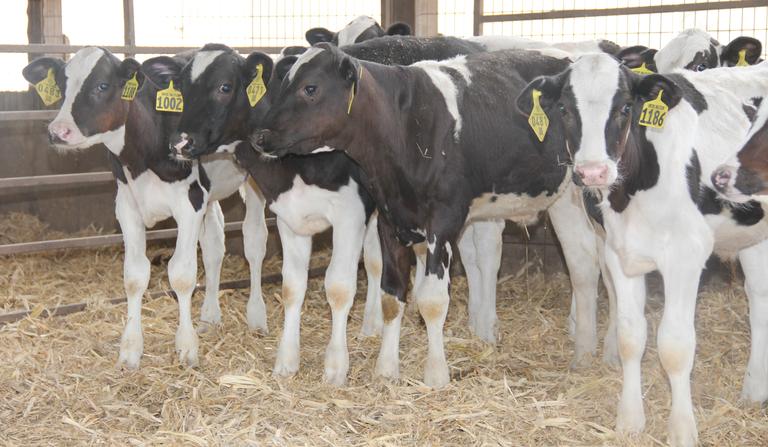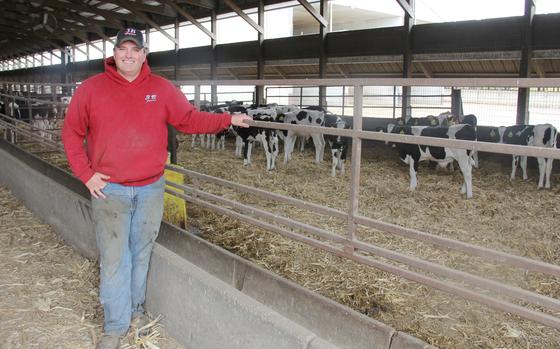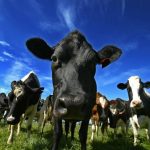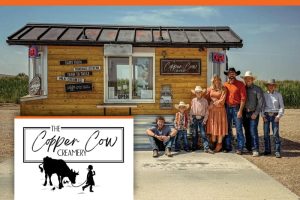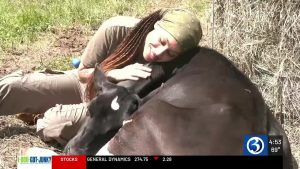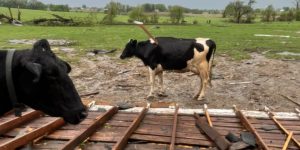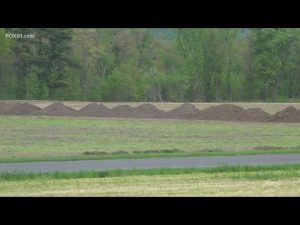
ADRIAN — When Steve Bullerman quit milking cows in the late 1990s, he wasn’t ready to say goodbye to the black and white Holsteins that had been a fixture on his rural Adrian farm.
In search of a new use for the dairy barn, the family connected with other dairy farmers in the area and began buying bottle calves to feed and grow to finishing weight.
“As time evolved, we started building the barns we have today,” said Jeff Bullerman, son of Steve. The father-son duo, along with Jeff’s cousin, Ted Bullerman, comprise the 3 B’s in 3B Farms, LLC.
Today, 3B Farms brings in 200- to 300-pound calves and raises them to 1,550 pounds before they are marketed to Packerland in Green Bay, Wisconsin. The calves are raised on Jeff’s farm, and moved to Ted’s farm for finishing.
“In 2003 we started building cattle barns,” Jeff shared of the initial starter and grower barns. By 2005, construction began on their first slatted floor finishing barn. The style was chosen for management and manure purposes, with four more slatted finishing barns constructed during the next five years to reach their current capacity.
“Calves go from the starter to grower barn, and at 600 pounds they go to the finisher barn,” Jeff said. “Today we’re at about 4,000 head and finish out a little over 3,000 head a year.”
With few packers taking Holstein cattle these days, Jeff said the breed appealed to them because there was a market niche at the time.
“When we started, people joked that it wasn’t real cattle,” he said. “It came down to money and flowability (for us). On paper, it makes more sense to us.”
The Bullermans get in 12- to 13-week-old calves once a month from farmers in Michigan, Indiana and Kentucky, as well as from Amish farms in New York and Pennsylvania. While the feedstuffs are primarily the same as used in traditional beef breeds, the ration is balanced differently.
“With the slatted barn and working with a nutritionist, we figured out Holstein steers couldn’t be raised on a dairy ration or beef ration,” Jeff said. “Once we figured out that balance, we found a product the packers were excited about.”
“For years, Holstein steers were fed so hard as calves that they would get to 1,100 or 1,200 pounds and stop growing,” he added. “Now we can get a daily gain of three pounds, which isn’t far off of Angus.”
Jeff said the barns on their site are holding up really well, and if they had it to do over, there’s only a few things he’d like to tweak.
“If I was building new buildings, I wouldn’t change a whole lot,” he added.
